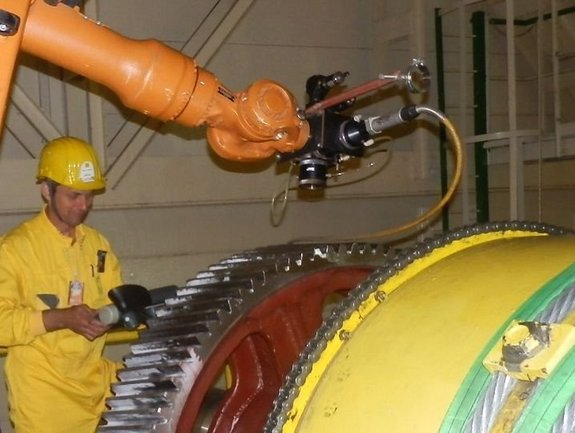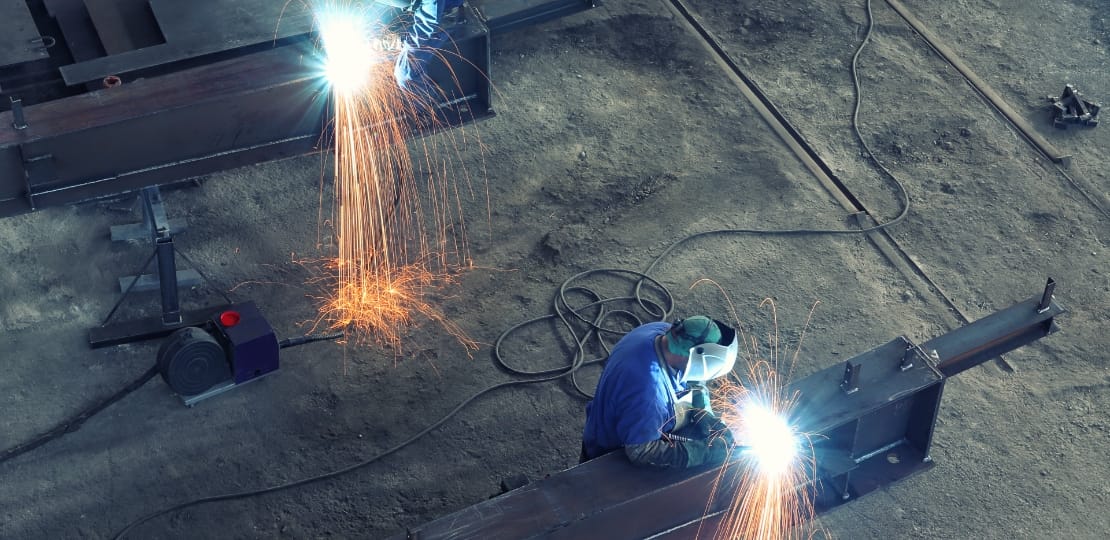Advanced weld correction methods from Belgrade Welding professionals
Wiki Article
Usual Welding Repair Service Issues and Exactly How to Address Them Properly
Welding fixings frequently encounter an array of concerns that can endanger the honesty of the last product. Typical problems consist of inadequate penetration, porosity, and imbalance, among others. Each issue offers one-of-a-kind difficulties that need details approaches for resolution. Comprehending these concerns is vital for welders intending to improve their end results and skills. This conversation will check out these typical welding repair service problems and efficient techniques to resolve them.Poor Infiltration
Poor infiltration occurs when the weld steel fails to totally fuse with the base material, leading to weak joints and possible structural failings. This problem usually comes from inadequate heat input, inaccurate electrode angle, or inappropriate welding speed. Welders may run into insufficient infiltration because of a mistake of the required specifications for a specific product density or kind. Furthermore, contamination on the base product's surface area can impede reliable bonding, worsening the trouble. To deal with poor penetration, welders ought to ensure suitable setups on their equipment and maintain a clean job surface area. Routine inspection of welds is suggested to determine any kind of shortages early, allowing for timely improvements and the prevention of endangered structural honesty in welded settings up.Porosity
Porosity is an usual defect in bonded joints that shows up as small gas bubbles entraped within the weld metal. This flaw can endanger the integrity of the weld, leading to decreased strength and potential failing under anxiety. Montana Mobile Welding and Repair Belgrade Fabrication. Porosity typically emerges from contamination, dampness, or inappropriate welding strategies, which permit gases to leave into the molten weld pool. To attend to porosity, welders ought to assure proper surface area preparation, keep a clean workplace, and make use of appropriate welding criteria. In addition, choosing the best filler product and securing gas can alleviate gas entrapment. Normal assessment and screening of welds can aid recognize porosity early, assuring prompt rehabilitative actions are taken, thereby protecting the quality and reliability of the welded structureImbalance
Imbalance in welding can emerge from various aspects, including inappropriate configuration and thermal development. Recognizing the origin is essential for effective resolution. Numerous adjustment methods are readily available to straighten parts and ensure structural stability.Causes of Imbalance
Welding imbalance frequently stems from a variety of underlying issues that can compromise structural honesty. One main cause is improper fit-up of parts prior to welding, which can lead to spaces and irregular surfaces. Variations in thermal expansion during the welding procedure can also cause distortion, particularly if the materials being signed up with have different coefficients of growth. In addition, inadequate clamping and fixturing might fall short to hold components firmly in location, resulting in movement during welding. Improperly kept devices, consisting of welding machines and tools, might introduce incongruities in the weld bead, more contributing to misalignment. Operator mistake, stemming from insufficient training or experience, can likewise play a considerable role in producing misaligned welds.
Improvement Methods Available
Dealing with misalignment efficiently needs a combination of rehabilitative strategies tailored to the details problems available. One usual approach is making use of fixtures or jigs to hold components in the right setting throughout welding, making certain regular alignment. Additionally, pre-heating the materials can help in reducing distortion and boost fit-up. For considerable imbalance, mechanical realignment techniques, such as making use of hydraulic jacks or clamps, can be utilized to remedy the position prior to welding. Post-weld warm therapy may also be essential to alleviate stress and anxieties brought on by imbalance. Mindful assessment and modification throughout the setup phase can prevent misalignment issues from becoming considerable issues, advertising a smoother welding process and enhancing overall architectural honesty.Distortion
Distortion is a typical challenge in welding that can arise from numerous factors, including uneven heating & cooling. Understanding the sources of distortion is vital for implementing reliable prevention methods. Resolving this concern not only improves architectural stability yet likewise improves the total quality of the weld.Root causes of Distortion
When based on the intense warm of welding, materials usually undertake changes that can lead to distortion. This sensation primarily occurs from thermal development and tightening throughout the welding procedure. As the weld area heats up, the product increases; upon cooling, it acquires, which can produce interior stress and anxieties. In enhancement, irregular home heating across a workpiece can intensify these stress and anxieties, causing warping or bending. The sort of material also plays a substantial duty; metals with varying thermal conductivity and coefficients of expansion may react in different ways, leading to uncertain distortions. In addition, poor joint layout and poor fixturing can add to misalignment throughout welding, increasing the likelihood of distortion. Comprehending these causes is crucial for reliable welding fixing and avoidance strategies.Avoidance Techniques
Efficient prevention strategies for distortion throughout welding concentrate on managing warm input and making sure proper joint design. Keeping a constant warm input assists to reduce thermal expansion and tightening, which can lead to distortion. Using methods such as preheating the work surface can likewise lower the temperature level slope, promoting consistent home heating. Additionally, picking appropriate joint designs, such as T-joints or lap joints, can boost security and decrease stress and anxiety focus. Applying correct fixturing to safeguard the work surfaces in location further aids in keeping alignment during the welding procedure. Ultimately, staggered welding sequences can disperse heat a lot more equally, avoiding local distortion. By using these methods, welders can greatly reduce the likelihood of distortion and improve the total high quality of their welds.Cracking
Fracturing cored wire is an usual issue encountered in welding repair work, usually arising from different aspects such as incorrect air conditioning rates, product option, or insufficient joint preparation. The incident of splits can considerably jeopardize the honesty of the weld, leading to potential failures during operation. To resolve this issue, welders need to initially assess the root creates, ensuring that materials work and appropriately picked for the specific application. In addition, regulating the cooling rate throughout the welding procedure is vital; fast air conditioning can induce stress and cause fracturing. Correct joint design and preparation likewise contribute to lessening the risk. Carrying out these strategies can enhance weld quality and toughness, eventually decreasing the likelihood of splitting in completed weldments.
Insufficient Fusion
A significant issue in welding fixings is insufficient fusion, which happens when the weld steel does not adequately bond with the base material or previous weld passes - Montana Mobile Welding and Repair Fabrication. This problem can cause weaknesses in the joint, possibly jeopardizing the honesty of the bonded structure. Aspects adding to insufficient combination consist of insufficient heat input, inappropriate welding strategy, and contamination of the surface areas being joined. To resolve this issue efficiently, welders ought to assure appropriate pre-weld cleansing and surface area preparation, in addition to adjust their welding criteria to achieve adequate infiltration and blend. Routine examination throughout the welding process can likewise assist determine incomplete blend early, allowing dynamic welding for prompt rehabilitative actions to boost the general high quality of the weldOverheating
While welding repair work can enhance architectural integrity, overheating presents a considerable challenge that can bring about product deterioration. Extreme warmth during welding can modify the mechanical homes of steels, resulting in reduced stamina, increased brittleness, and bending. This sensation is especially vital in high-stress applications where architectural dependability is extremely important. Recognizing overheating can entail visual inspections for staining or distortion, along with keeping track of temperature level during the welding procedure. To alleviate the risks related to getting too hot, welders should utilize appropriate strategies, such as controlling warm input, readjusting traveling speed, and making use of suitable filler materials. Additionally, implementing pre- and post-weld warmth treatments can aid bring back material properties and boost the total high quality of the repair service, making sure long-lasting efficiency and safety.Often Asked Inquiries
What Are the Common Indications of a Welding Defect?

How Can I Check My Welds for High quality?
To check welds for quality, one can use aesthetic examinations, ultrasonic testing, and radiographic techniques. Each technique guarantees architectural honesty, determines problems, and verifies adherence to specified standards, eventually boosting the dependability of the welded joints.What Security Preventative Measures Should I Take While Welding?
When welding, one should focus on safety and security by putting on suitable individual safety devices, making certain proper ventilation, safeguarding combustible products away, preserving a clean work area, and understanding surroundings to stop accidents and injuries.Can I Repair a Weld Without Renovating the Entire Joint?
Fixing a weld without remodeling the whole joint is feasible, depending on the damages (Montana Mobile Welding and Repair Belgrade Welding). Strategies such as grinding, including filler product, or using a welding process can successfully attend to particular defects while maintaining the bordering frameworkWhat Equipment Are Vital for Reliable Welding Repair Works?
Essential tools for reliable welding repair services include a welding equipment, cable brush, grinder, protective equipment, clamps, and filler products. Each device plays an important duty in look at this website ensuring quality and security during the fixing procedure. Porosity commonly emerges from contamination, dampness, or incorrect welding methods, which enable gases to leave into the molten weld swimming pool. Badly kept devices, consisting of welding devices and devices, may introduce incongruities in the weld grain, additional adding to imbalance. When subjected to the extreme warm of welding, products usually go through changes that can lead to distortion. Breaking is an usual issue encountered in welding fixings, frequently resulting from various elements such as inappropriate cooling rates, product option, or poor joint preparation. A significant concern in welding repair services is insufficient blend, which occurs when the weld steel does not properly bond with the base product or previous weld passes.Report this wiki page